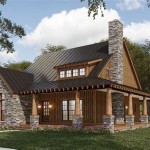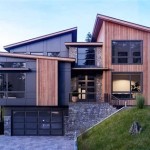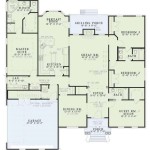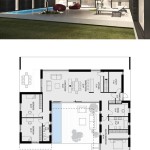Small House Plans: Maximizing Space and Minimizing Costs
The escalating cost of construction and land, coupled with a growing desire for simpler, more sustainable living, has fueled a significant surge in the popularity of small house plans. These plans, typically encompassing homes under 1,000 square feet, prioritize efficient space utilization and affordability without sacrificing comfort or style. A well-designed small house plan can offer a surprisingly spacious and functional living environment, perfectly suited for singles, couples, or small families seeking a manageable and economical home.
The allure of small house plans extends beyond mere financial considerations. They offer a reduced environmental footprint, requiring less energy for heating and cooling, and consuming fewer building materials. Furthermore, the reduced square footage translates to less time spent on cleaning and maintenance, freeing up homeowners to pursue other interests and enjoy a more relaxed lifestyle. Choosing the right plan, however, requires careful consideration of individual needs, lifestyle preferences, and local building codes. A plan that works perfectly for one individual may not be suitable for another.
Understanding the Benefits of Small House Living
The advantages of opting for a small house plan are multi-faceted, impacting various aspects of daily life and long-term financial well-being. These benefits are attracting a growing segment of the population seeking alternatives to traditional large-scale homes.
Reduced Construction Costs: One of the most compelling advantages of small house plans is the significant reduction in construction costs. Less square footage translates directly into lower material costs for framing, roofing, siding, flooring, and interior finishes. Additionally, smaller homes often require less labor, further contributing to overall cost savings. This allows homeowners to allocate their resources to higher-quality finishes or energy-efficient upgrades.
Lower Operating Expenses: The cost savings associated with small house living extend beyond the initial construction phase. Smaller homes require less energy for heating and cooling, resulting in significantly lower utility bills. Reduced property taxes and insurance premiums further contribute to lower monthly operating expenses. This can translate into substantial long-term savings, freeing up resources for other investments or lifestyle choices.
Minimal Environmental Impact: Small houses inherently have a smaller environmental footprint than larger homes. They require fewer resources to build and maintain, and they consume less energy. This aligns with the growing desire for sustainable living and reducing one's impact on the planet. The use of sustainable building materials and energy-efficient appliances can further minimize the environmental impact of a small house.
Simplified Lifestyle: Living in a smaller space often encourages a more minimalist lifestyle. The limited square footage necessitates decluttering and prioritizing possessions, leading to a more organized and less stressful living environment. This can free up time and energy for pursuing hobbies, spending time with loved ones, and enjoying a more fulfilling life. It promotes a conscious decision-making process regarding possessions and consumption.
Increased Location Flexibility: Small house plans can often be situated on smaller lots, opening up possibilities for building in desirable locations that may be unaffordable for larger homes. This flexibility allows homeowners to live closer to urban centers, amenities, or natural surroundings, enhancing their quality of life. Smaller homes can also be more easily adapted to unconventional building sites, such as narrow lots or sloping terrain.
Key Considerations When Choosing a Small House Plan
Selecting the right small house plan requires careful consideration of individual needs, lifestyle preferences, and site-specific factors. Rushing the decision can lead to dissatisfaction and costly modifications down the line. A thorough assessment of these factors is crucial for ensuring a comfortable and functional living space.
Lifestyle and Space Needs: The first step in choosing a small house plan is to realistically assess lifestyle and space needs. Consider how many people will be living in the house, their daily routines, and their individual space requirements. Think about the activities that will take place in the house, such as cooking, working from home, entertaining guests, or pursuing hobbies. Identify the essential spaces needed, such as bedrooms, bathrooms, kitchen, living area, and storage. Prioritize these needs and consider how different layouts can accommodate them efficiently.
Floor Plan Efficiency: Efficient floor plan design is paramount in a small house. Every square foot should be utilized effectively, minimizing wasted space and maximizing functionality. Open floor plans can create a sense of spaciousness and improve circulation. Multifunctional spaces, such as a living room that doubles as a guest bedroom, can further optimize space utilization. Consider the flow between different areas of the house and ensure that it is conducive to comfortable living. Special attention should be paid to traffic flow and the placement of furniture.
Storage Solutions: Adequate storage is essential in a small house to prevent clutter and maintain a sense of order. Incorporate built-in storage solutions, such as shelves, cabinets, and drawers, wherever possible. Utilize vertical space by installing tall cabinets or shelving units. Consider under-bed storage, attic storage, or storage sheds in the backyard. Organize possessions effectively and declutter regularly to maximize available storage space. The strategic placement of storage can greatly enhance the livability of a small home.
Natural Light and Ventilation: Ample natural light and ventilation can significantly enhance the comfort and livability of a small house. Incorporate large windows, skylights, and transoms to maximize natural light penetration. Ensure adequate cross-ventilation to promote air circulation and reduce the need for air conditioning. Consider the orientation of the house to maximize sunlight exposure during the winter and minimize it during the summer. Properly designed windows and ventilation systems can create a brighter, healthier, and more energy-efficient living environment.
Building Codes and Regulations: Before selecting a small house plan, it is essential to research local building codes and regulations. These regulations may specify minimum square footage requirements, setback distances, height restrictions, and other factors that could impact the feasibility of a particular plan. Consult with local building officials or a qualified architect to ensure that the chosen plan complies with all applicable regulations. Failure to comply with building codes can result in costly delays and modifications.
Design Strategies for Maximizing Space in Small Houses
Creative design strategies are crucial for maximizing the perceived and actual space in a small house. By implementing clever design techniques, it is possible to create a comfortable and functional living environment that feels much larger than its actual square footage. These strategies often involve visual tricks and efficient use of available space.
Open Floor Plans: Open floor plans, which combine the living room, dining area, and kitchen into a single unified space, are a popular choice for small houses. This layout eliminates the need for interior walls, creating a sense of spaciousness and improving circulation. Careful zoning of the open space with furniture placement and area rugs can define distinct functional areas without compromising the sense of openness. Open floor plans also facilitate social interaction and create a more connected living environment.
Vertical Space Utilization: Utilizing vertical space is another effective strategy for maximizing space in small houses. Tall ceilings can create a sense of grandeur and allow for the installation of lofts or mezzanines, which can be used as bedrooms, offices, or storage areas. Vertical storage solutions, such as tall bookshelves or cabinets, can further optimize space utilization. Hanging items from the ceiling, such as plants or lighting fixtures, can also add visual interest and free up floor space.
Multifunctional Furniture: Multifunctional furniture is designed to serve multiple purposes, making it ideal for small spaces. Sofa beds can provide a comfortable seating area during the day and transform into a guest bed at night. Coffee tables with storage compartments can provide space for storing magazines, blankets, or other items. Folding tables and chairs can be easily stored away when not in use. Selecting furniture that serves multiple functions can significantly reduce clutter and maximize space utilization.
Built-in Storage: Built-in storage solutions, such as shelves, cabinets, and drawers, can be seamlessly integrated into the design of a small house, providing ample storage without taking up valuable floor space. Built-in storage can be incorporated into walls, under stairs, or around windows. Custom-designed built-ins can be tailored to specific storage needs, ensuring that every inch of space is utilized effectively. Built-in storage can also add architectural interest and enhance the overall aesthetic of the house.
Light and Color: The use of light and color can significantly impact the perceived size of a small house. Light colors tend to reflect light, making a space feel brighter and more spacious. Dark colors tend to absorb light, making a space feel smaller and more enclosed. Utilizing a light color palette on walls, ceilings, and floors can create a sense of openness and airiness. Adding pops of color with accessories and artwork can add visual interest without overwhelming the space. Strategic placement of mirrors can also reflect light and create the illusion of more space.
By carefully considering these factors and implementing creative design strategies, it is possible to create a comfortable, functional, and stylish small house that meets individual needs and lifestyle preferences. The key is to prioritize efficient space utilization, maximize natural light, and incorporate storage solutions that minimize clutter. The increasing popularity of small house plans reflects a growing trend towards simpler, more sustainable, and more affordable living.

These Small House Plans Pack A Lot Of Punch Houseplans Blog Com

540 Best Small House Plans Ideas

10 Small House Plans With Open Floor Blog Homeplans Com

Small House Plans Simple Floor Cool

2 Bedroom 992 Sq Ft Tiny Small House Plan With Porch 123 1042

10 Small House Plans With Open Floor Blog Homeplans Com

Small House Plan Examples

Transitional House Plans Modern Traditional Designs

Small House Plans We Love Houseplans Blog Com
:max_bytes(150000):strip_icc()/winonna-park-SL-503-0675202627e340c8ba545498653420fc.jpg?strip=all)
Three Bedroom House Plans That Never Require A Downsize
Related Posts








